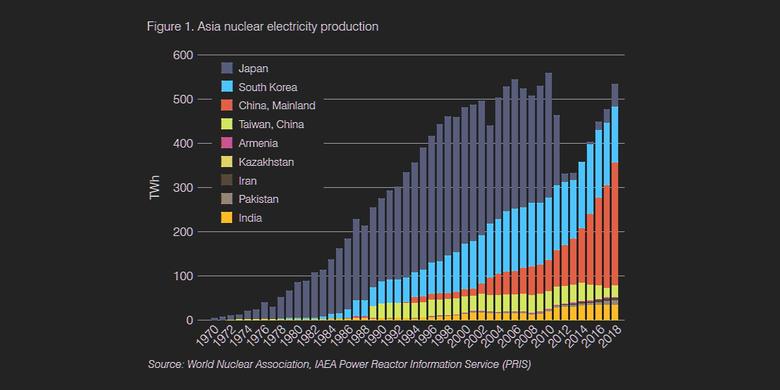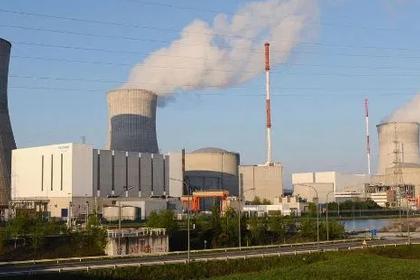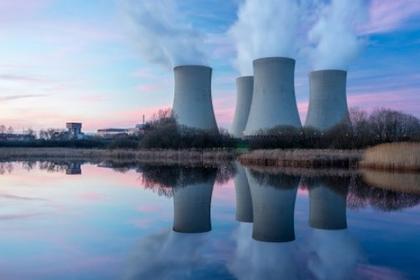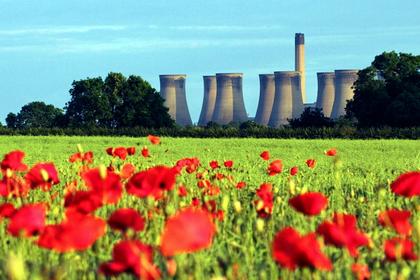
ASIA'S NUCLEAR POWER BENEFITS

WNA - 30 October 2019 - World Nuclear Performance Report 2019 Asia Edition
In 2018 a total of 533 TWh of electricity generated in Asia was from nuclear power. This was 12% higher than the previous year, and 60% higher than in 2012. Nuclear generation in Asia now represents 21% of total electricity generation.
The amount of electricity generated from nuclear energy in Asia in 2018 is more than twice that of 30 years ago. Excluding Japan, since 1988 nuclear generation has grown by a factor of more than 10, driven primarily by development of nuclear energy in South Korea, mainland China and India.
China faces the challenge of needing more electricity to power an increasingly urbanized population whilst addressing acute air pollution, which has emerged as the main environmental issue facing the country in recent years. That dual challenge, coupled with an ongoing need to reduce greenhouse gas emissions and improve reliability and security of supply, continues to highlight the unique value of nuclear energy to olicymakers. China in 2018, for the sixth consecutive year, added more nuclear capacity to its grid than any other country worldwide.
Asia is a focus of new nuclear build, and the region is likely to see a new country begin generating electricity from nuclear in 2020 as the first unit at Barakah, United Arab Emirates, begins operating. As of September 2019, a total of 33 reactors are being built in Asia, across nine different countries. Both Bangladesh and Turkey commenced construction of their first nuclear power plants in the last two years. Proposals are under consideration in a number of other countries, including Saudi Arabia where provisional plans include two large nuclear power plants as well as small reactors for desalination.
Japan was the largest generator of nuclear electricity in Asia prior to the Fukushima Daiichi accident in March 2011. In 2010, over one-quarter of Japan's electricity was generated from nuclear energy, accounting for just over half of all nuclear electricity generation in Asia. Since the accident, reactors have been slow to return to service, which has resulted in a very large impact on total nuclear generation in Asia.
The OECD International Energy Agency has reported that the temporary shutdown of reactors led to a significant rise in fossil fuel use, increased fuel imports and higher carbon dioxide emissions. The country's energy policy is for nuclear to provide 20-22% of total electricity generation by 2030.
-----
Earlier:















